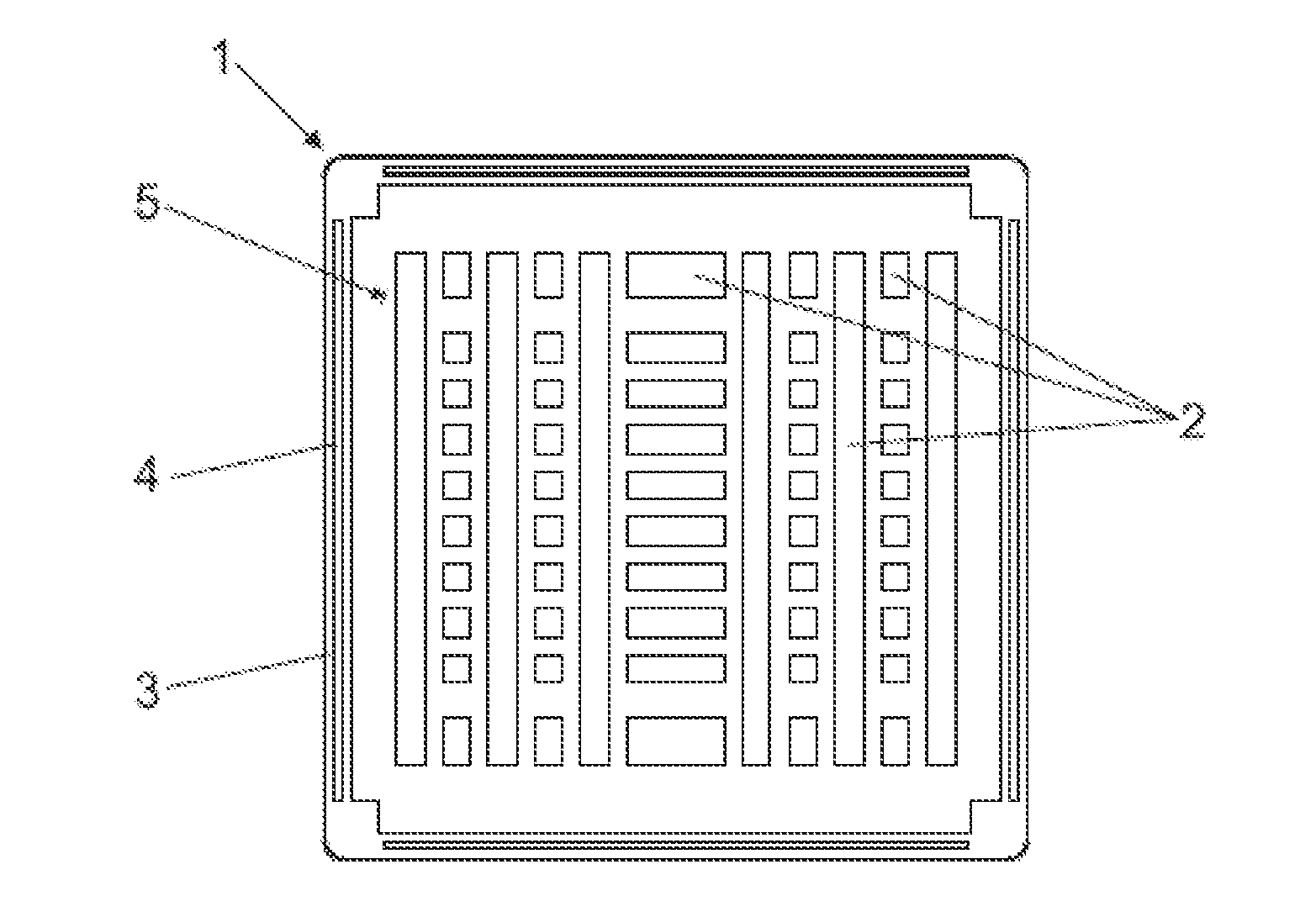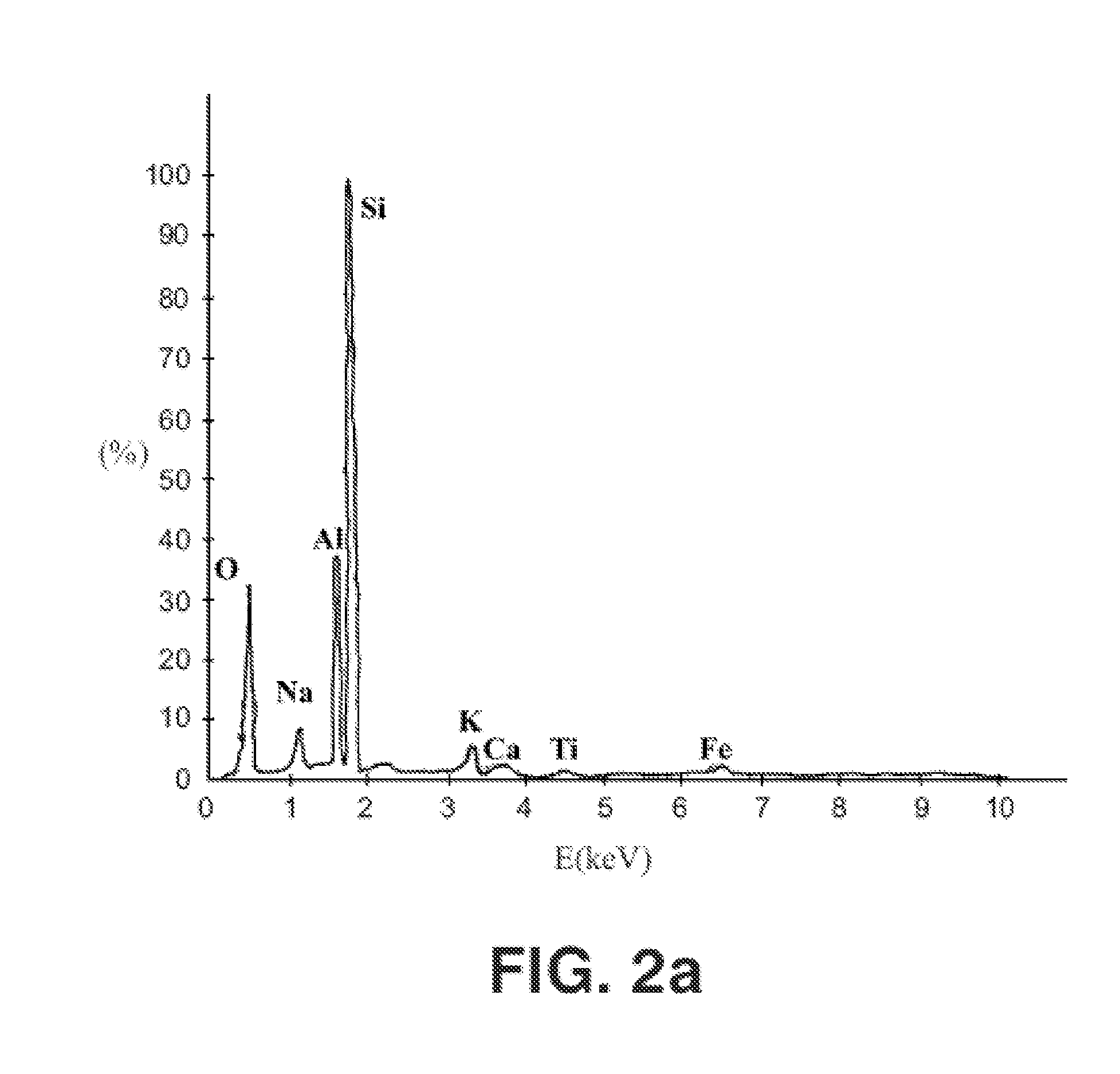Thermal accumulation-transmission panel and the process for obtaining it
a technology of thermal accumulation and transmission panel, which is applied in the field of improved porcelain stoneware panels, can solve the problems of reducing the thermal performance of equipment, reducing the thermal transmission, and reducing the application of traditional porcelain stoneware for heating systems, so as to improve the mechanical properties, improve the thermal accumulation performance, and improve the thermal performan
- Summary
- Abstract
- Description
- Claims
- Application Information
AI Technical Summary
Benefits of technology
Problems solved by technology
Method used
Image
Examples
example 1
Chemical Analysis by Calcination at 900° C.
[0049]The following table shows, for comparative purposes, the chemical composition of a sample of normal porcelain stoneware for surfacing.
SiO268.6%Al2O318.1%B2O3Fe2O32.13%CaO0.37%MgO0.23%Na2O4.49%K2O1.31%TiO20.69%ZrO20.08%BaO0.12%Li2OPbOZnOHfO2P2O50.20%SrO0.03%Cr2O30.73%Loss due to2.66%calcination at 900° C.
[0050]The following table shows the chemical composition of a sample of improved porcelain stoneware for heating applications. This chemical composition differs from that of normal porcelain stoneware for surfacing by approximately 7% in the silicon and aluminium oxide content:
SiO284.6%Al2O39.0%B2O3Fe2O30.41%CaO0.23%MgO0.33%Na2O2.40%K2O0.97%TiO20.34%ZrO20.04%BaO0.03%PbOZnO0.01%HfO2P2O50.04%SrO0.01%Loss due to1.63%calcination at 900° C.
example 2
Firing Cycles
[0051]As can be seen in FIG. 1, the total firing time, i.e. the combination of heating, firing and cooling of a cycle according to the process of the invention (continuous line) is longer than that corresponding to a manufacturing process for traditional porcelain stoneware (discontinuous line), reaching, in the case of the invention—improved stoneware—70 minutes.
example 3
Energy-Dispersive X-Ray Analysis
[0052]FIG. 2b (improved porcelain stoneware) shows the content of Si, Al and the presence of Zr in comparison with traditional porcelain stoneware of FIG. 2a.
PUM
| Property | Measurement | Unit |
|---|---|---|
| thickness | aaaaa | aaaaa |
| thickness | aaaaa | aaaaa |
| thickness | aaaaa | aaaaa |
Abstract
Description
Claims
Application Information
 Login to View More
Login to View More - R&D
- Intellectual Property
- Life Sciences
- Materials
- Tech Scout
- Unparalleled Data Quality
- Higher Quality Content
- 60% Fewer Hallucinations
Browse by: Latest US Patents, China's latest patents, Technical Efficacy Thesaurus, Application Domain, Technology Topic, Popular Technical Reports.
© 2025 PatSnap. All rights reserved.Legal|Privacy policy|Modern Slavery Act Transparency Statement|Sitemap|About US| Contact US: help@patsnap.com



